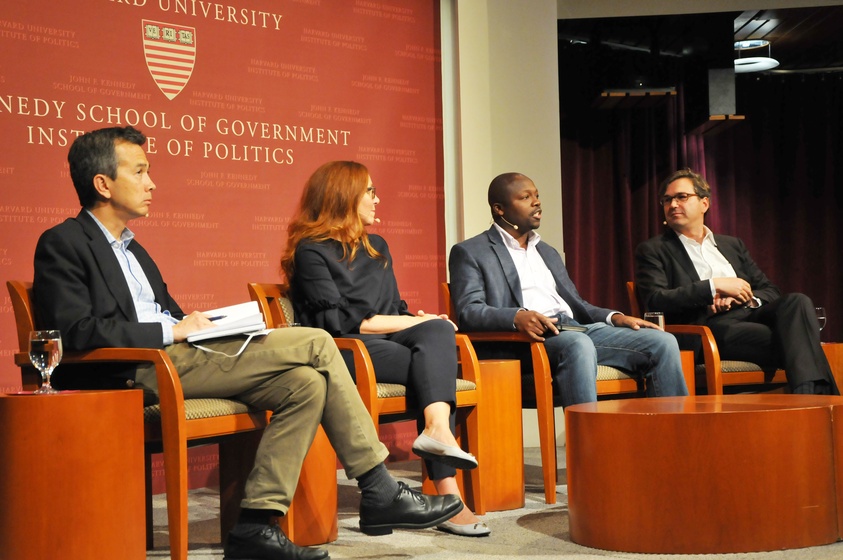Envision a world in which companies only employ the most educated sliver of the population, while artificially intelligent machines have filled everyone else’s jobs. Humans are powerless in a world controlled by algorithms and those who code them.
Members of the Kennedy School student organization AI Initiative worry about that very future. Earlier this fall, the organization hosted a panel discussion that hoped to answer a foreboding question: Will you still have a job when the robots arrive?
The answer, as it turns out, is maybe. In the job market at large, automation is most likely to put pressure on low wage jobs, according to Jason Furman, Professor of the Practice of Economic Policy at Harvard Kennedy School. According to Furman, jobs earning less than $20 per hour are 83 percent more likely to be automated by 2050, while jobs earning over $40 per hour are only 4 percent more likely to be automated.
As the job-reach of robots expands into the distant future, these percentages will only grow. Recent exponential increases in computational capacity, coupled with the plummeting costs of hardware, have meant companies can deploy AI in a wider range of tasks. These tasks include the navigation of “more real-life scenarios,” as Francesca Rossi, AI Ethics Global Leader at IBM Research, put it.
This technology can have interesting implications in fields like law: Every year, AI learns how to perform 2 percent of the nation’s legal work, but many hurdles lie ahead. A robot still “can’t get up in a courtroom and argue a case,” Furman said.
So there’s still some hope for the future of human employment. IBM’s strategy is “not to replace humans, but to augment their cognitive capabilities,” Rossi said.
Rossi also emphasized AI’s ability to improve the usability and sustainability of existing products. Machine learning, for example, has enabled Google to cut its energy emissions in data centers by 40 percent. “Beyond a cool translate app, think about the impact this technology could have on energy and climate,” White said.
Nevertheless, real-life obstacles lie in the way of AI’s deployment, most notably government regulation and public trust. Many large technology firms currently exist within a regulatory limbo because their research lies in uncharted territory.
And it remains to be seen whether artificial intelligences can be trusted with evaluative questions. If a machine makes a decision on hiring someone, do we trust their decision entirely or fall back on human intervention? Could AI exacerbate or reduce extant race and gender biases? For consumers, “it is imperative those who use AI trust the decisions that AI give them” Rossi said.
Events like these are one way that AI enthusiasts hope to make the technology more palatable not only to the public, but to politicians, who may react to AI unthinkingly, or without fully understanding the technology.
Questions remain, but some students left the panel optimistic.
“Instead of necessarily looking to a future when people are jobless, AI will open doors for people in the future,” said Abdelaziz N. Buhnasy ’21. “That is something great to think about.”


